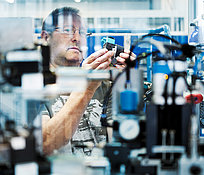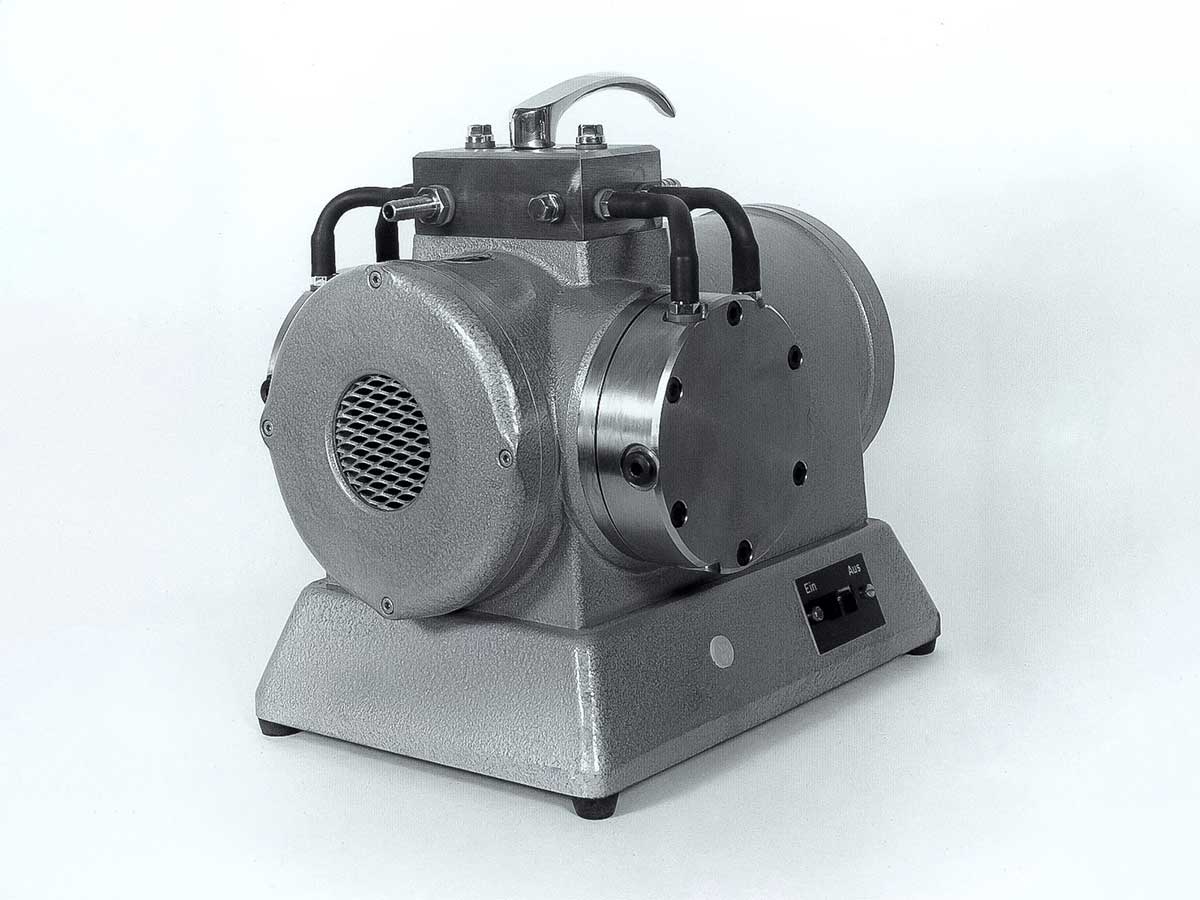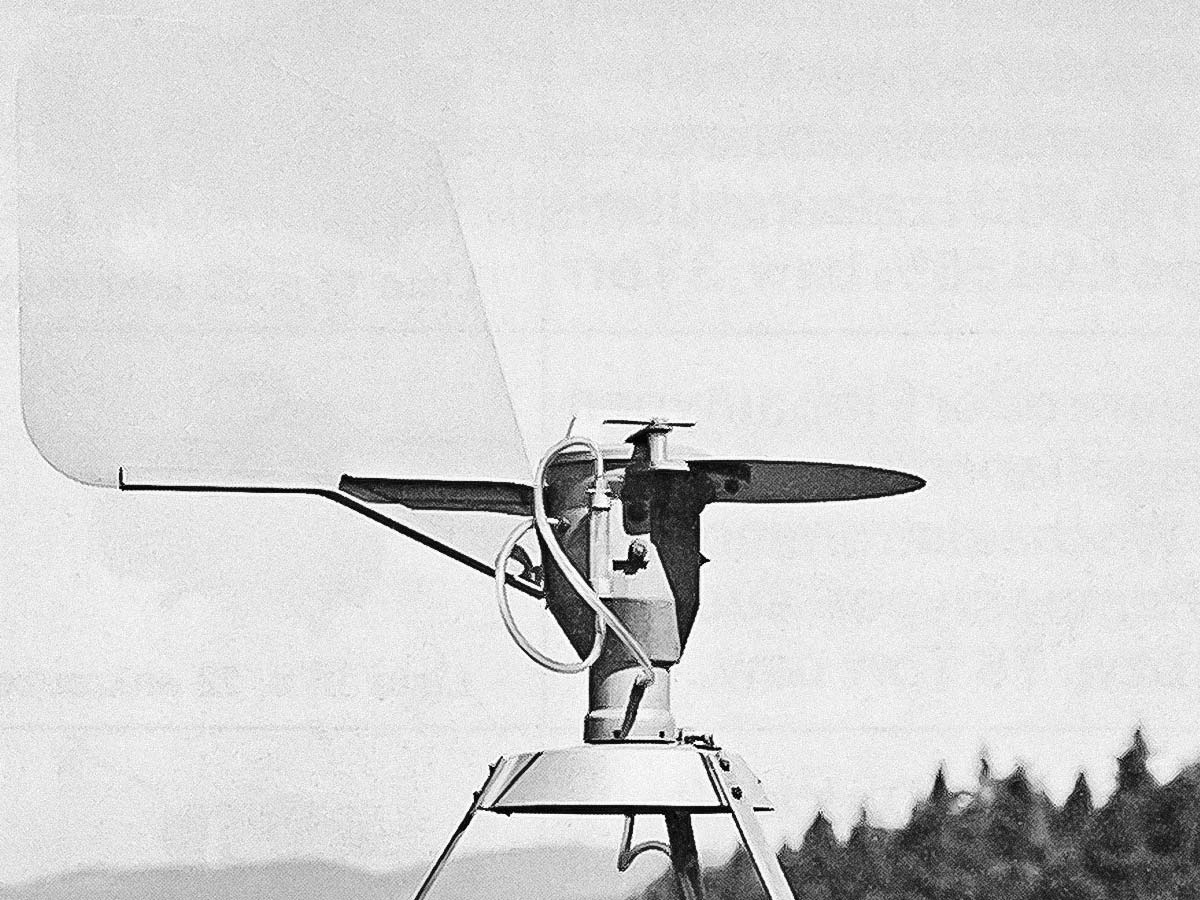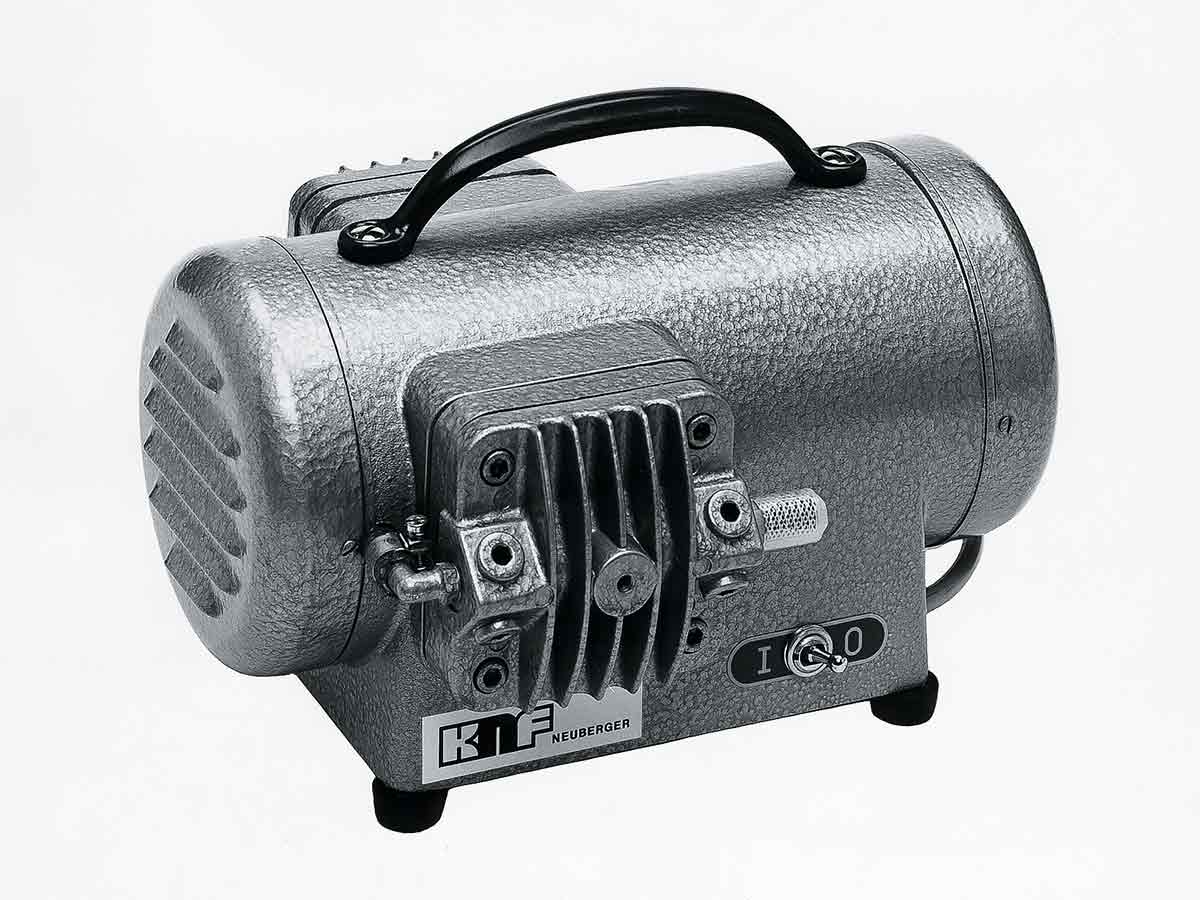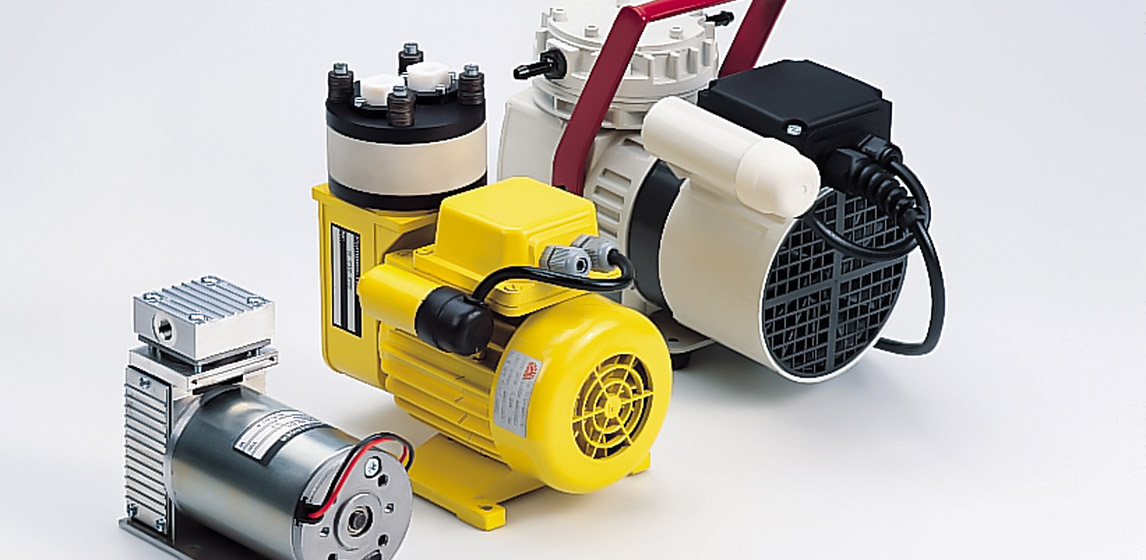
Pumps for Corrosive and Aggressive Media
Every problem has a solution. Many special innovations have been instrumental in securing KNF’s success over the years. After the NK 25 with its two pump heads sees the company break into the laboratory sector in the mid-1960s, KNF begins to grow at a rapid pace. The young company is constantly faced with new challenges, which it tackles with great commitment.
One of these challenges comes about as a result of laboratories using more and more corrosive media. “We realized that polypropylene wasn’t suitable, so we switched to stainless steel,” recalls former general manager Erich Becker. This marks the first time that a system is employed to select materials depending on the product’s intended purpose. “We had a slider to help us choose which materials to use,” continues Becker. “It showed us that if we had 50 liters of hydrochloric acid, for example, we should select the N so-and-so pump.”
This system is expanded very quickly over the years to come. And 20 years later, KNF works with so many individual parts that an IT system had to be put in place to manage the several thousand variants. “The real artistry lies in choosing the right materials for the project at hand,” explains Erich Becker. Teflon, aluminum, stainless steel, ceramics – and there is even one project in the field of catalytic converter research where the pump head and gas flow controller had to be gold-plated to meet the customer’s requirements.
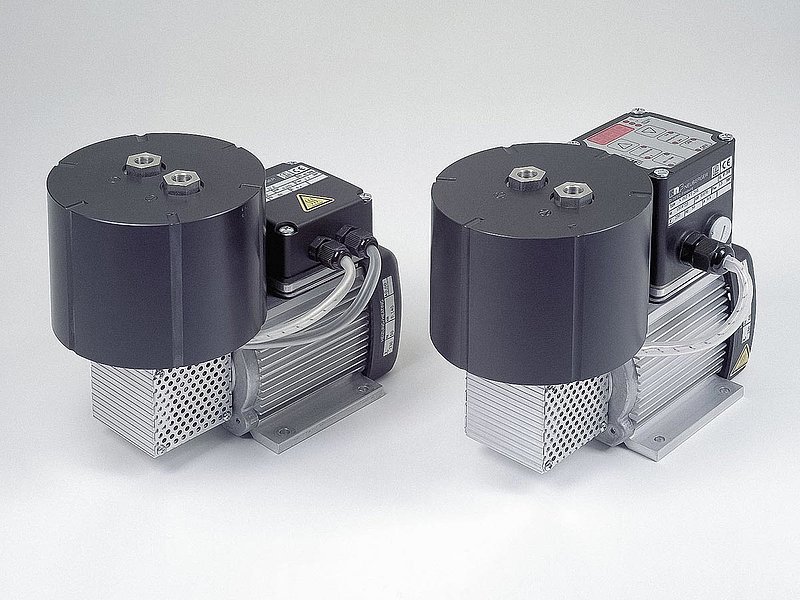
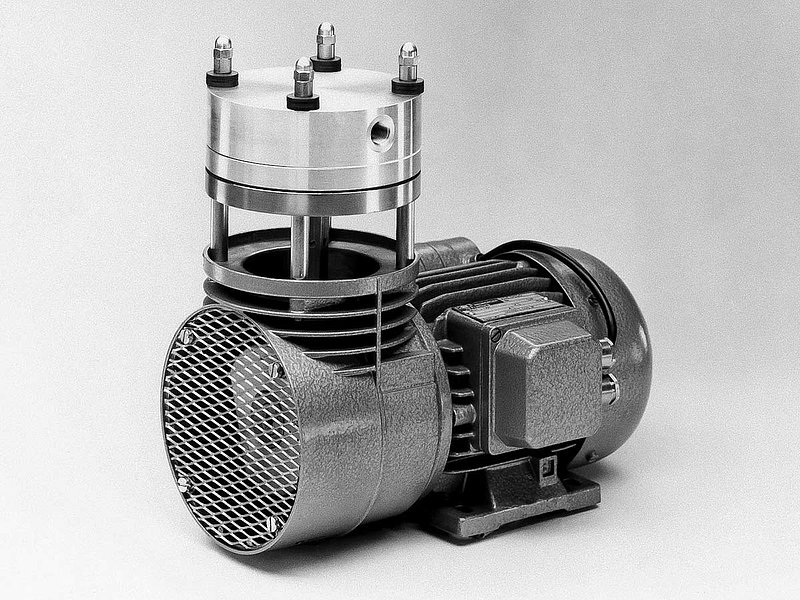
Safety standards are also becoming more stringent. The double diaphragm system launched by KNF in 1972 provides twice the level of protection, even in contact with aggressive substances. KNF also develops heated pumps for transferring hot and corrosive gases. These days, dealing with caustic, corrosive or even explosive or radioactive substances is part of everyday life at KNF. After all, as Erich Becker once said, “We are known for solving complex problems.”
KNF Blog Knowledge Flows
Follow the latest trends and stories on how diaphragm pump technology drives evolution in the market.
Knowledge Flows